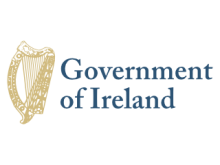Resource information
These Regulations designate a coastal area as a Special Protection Area in accordance with Article 4 of Directive 2009/147/EC of the European Parliament and of the Council on the Conservation of Wild Birds. The purpose is to ensure survival and reproduction of all species of birds to which Article 4 relates and in particular those listed in Schedule 3 to these Regulations. Schedule 4 lists activities that require the consent of the Minister and may cause disturbance or damage to birds protected under Schedule 3. The bird species listed in that Schedule are protected to ensure their survival and reproduction in their area of distribution. Activities that require consent of the Minister include: reclamation of land; introduction, or re-introduction, of plants or animals not found in the area; burning, topping, clearing scrub or rough vegetation or reseeding; drainage works; planting of trees or multi-annual bioenergy crops; and intensification of livestock keeping.
Implements: Directive 2009/147/EC of the European Parliament and of the Council on the conservation of wild birds. (2009-11-30)



